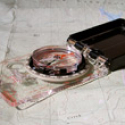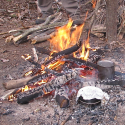
In almost anything in life, there are many ways to learn and improve, but probably one of the most effective and lasting ways is through trial and error. There is nothing like the proverbial 2×4 being cracked against your head to keep you from making the same mistake twice. The same is true when it comes to wilderness survival, but the problem is that sometimes that mistake that you make might literally be your last. That’s why it is especially helpful (and far less painful or embarrassing) to learn from someone else’s mistake. So, one great resource that I encourage to check out is the National Park Service Preventive Search and Rescue “Lessons form the Field.” With a very similar approach to how the NTSB studies plane crashes to help make the airline industry more safe, so does the NPS PSAR. Their blog is a collection of actual accidents that have occurred […]
Read more →

